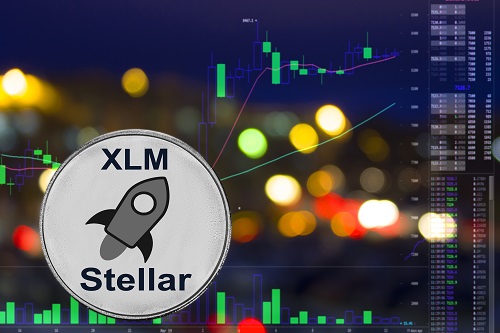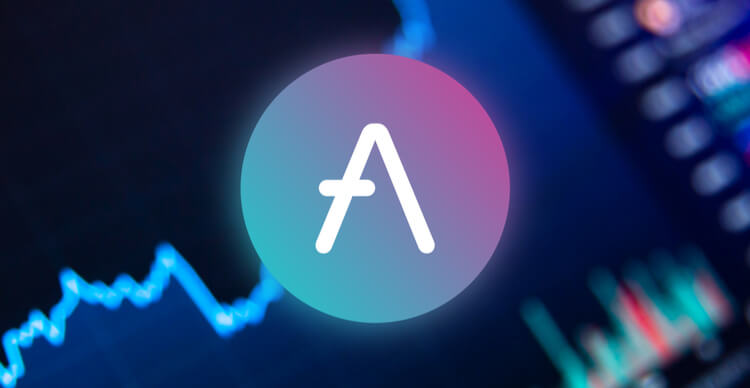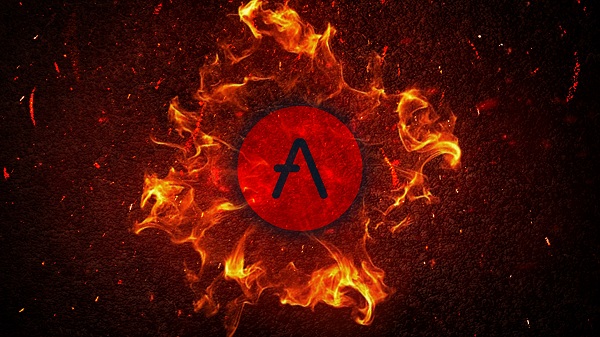What is Aave & How Does it Work? - AAVE for Beginners
A successor of ETHLend’s LEND token, AAVE is the governance token of the Aave platform, granting holders the right to vote on decisions such as new services and making changes to existing ones. Although a relatively newcomer, the governance features and the success of its lending platform has catapulted its price.
While for many this virtual currency is a good store of value and an excellent way to hedge against inflation of fiat, Aave is more than that. The ability to earn by lending out idle tokens, along with the appreciating price, makes it an interesting proposition.
Why Was Aave Invented?
The advent of decentralised finance (DeFi) changed how the public lends and borrows money. Traditionally, intermediaries such as banks act as marketplaces, escrows and facilitators, all rolled into one. They seek out people who want to invest in different schemes to earn passive income and guarantee them profits through a fixed return.
At the same time, people in need of money approach these institutions for loans. The institutions earn from the difference between the interest they charge borrowers and what they promise to investors.
The principle sounds simple, but the reality is very different. Borrowers face many hurdles before their loan is approved. The institutions have very specific conditions, such as a documentation process to vet if the borrower will be able to pay back the loan, the requirement of collateral as insurance against defaulting, and offering the loan at sometimes exorbitant interest rates.
Greed has increased and lenders today receive a nominal amount, which hardly covers the inflation rate of fiat. On the other hand, borrowers are fleeced with interest rates that are difficult to repay.
Aave is a crypto lending platform that leverages the use of blockchain and smart contracts to eliminate the middleman completely, offering lower interest rates to borrowers and higher profit margins to lenders. At its heart is the AAVE token, a profit-generating and governance token.
How Does Aave Work and What Technology is Behind It?
Built on the blockchain, Aave uses peer-to-peer technology, which is run by computers that are interconnected and all transaction data is mathematically proven and shared on the digital ledger. Pieces of code, called smart contracts, run on the blockchain, enabling automated operations when certain parameters are met.
The combination of technology and smart contracts allow Aave to create a lending and borrowing platform that requires no human interaction. People offer their cryptocurrencies to be borrowed at specific rates and others take them as loans, depositing acceptable cryptocurrencies as collateral. With no institution in the middle, this means no paperwork, no waiting, lower interest rates for borrowers and higher returns for lenders.
The AAVE token can be lent or borrowed and even used as collateral for other crypto loans, opening up a whole new financial world. While lending the token offers a handsome return, it can also be staked for profits. At the same time, it offers governance, as the platform is a decentralised autonomous organisation (DAO). The people are the institute.
Is Aave Real Money?
It all depends on how you look at it. Cryptocurrencies have different classifications depending on how different regulatory authorities look at them. Although not backed by a central bank, AAVE fulfils a lot of characteristics of different assets including money and bullion.
While AAVE may not be as popular as Bitcoin or other altcoins, it can be used just like money. It can provide a medium of exchange and value. You can send and receive the AAVE token just as easily as sending money through your banking app.
On the other hand, AAVE also has properties similar to precious metals like gold. There is a finite supply of AAVE tokens, 16 million to be exact. With just under 13 million tokens already in circulation, the rest are kept for emergency injection in the protocol should more coins be needed. With a capped supply and increasing demand, upward pressure has driven its value to rise, just like Gold.
The AAVE token also gives its holders the right to vote on the development of the platform. Just as shareholders of a firm can vote on matters regarding finances and operations, so can AAVE holders. They can make proposals on existing services or introduce new ones. The rest of the community can then vote, with the majority deciding if the proposal goes forward or not.
While it is a leading token in the DeFi sphere, it still lacks global acceptance by merchants, when compared with other altcoins such as Litecoin and Monero. However, this could change in the future as Aave continues to offer benefits and gain acceptance.
Fees and Expenses of Aave
As a blockchain-based token, Aave is free from any geographical limitations and it doesn’t matter where you are located with respect to the receiver. Unlike banks, which can charge you different rates for different countries, the fee is the same everywhere for Aave. The fee itself, however, is ever-changing.
AAVE tokens are ERC-20 compatible and so run on the Ethereum blockchain. Therefore, transactions have to be paid for in GAS, a fee that is distributed to miners who validate transactions. The fee is the compensation for their time and energy. At the time of writing, the average Ethereum transaction fee is about $6.80.
The Ethereum network is currently limited to about 10-15 transactions per second and this causes congestion in times of high activity and can result in the transaction fee rising. To counter this, the Aave protocol is also available on Polygon. This second layer solution network runs sidechains that are faster, cheaper and yet still able to tap into the main Ethereum chain for security. The average transaction fee on Polygon is a fraction of the cost ($0.000146).
For operations within the Aave protocol, the fee is considerably higher and the differences are vast between Ethereum and Polygon. Lending can cost as much as $29.40 at time of writing on the Ethereum network, and almost double for a borrower ($42.30). On the other hand, using the Polygon network is about $0.000590 for lending and $0.000850 for borrowing.
The high fees on Ethereum might soon change as it moves to ETH 2.0 and shifts from the energy-intensive Proof of Work consensus to the efficient Proof of Stake.
When it comes to crypto exchanges, there are other fees to consider. Exchanges can charge deposit and/or withdrawal fees for your AAVE tokens, on top of any trading you do (maker and taker fees). Each platform has its own fee structure which you should examine before signing up. Buying AAVE with fiat through bank transfers or debit/credit cards may mean extra fees from your bank or card provider, which can vary significantly depending on your and the platform’s location.
What Are the Benefits of Aave?
All cryptocurrencies stem from Bitcoin and its technology — blockchain. Created to be better than fiat, tokens such as AAVE provide several benefits.
Using a peer to peer network, Aave is fast, taking only a few minutes to be transacted from one party to another. Apart from the time it takes to record the transaction on the ledger, the time and effort required beforehand is also minimal. If you want to send regular money using banks, you might face the time consuming and frustrating process of explaining why you need to send the money, who is receiving it and what the purpose of the transaction is. Not with Aave — simply send it.
For smaller transactions, the fee may sometimes not justify them, but since it is independent of the amount and recipient location, large volume transactions become increasingly cheap to send, even at a global level.
Since Aave is a blockchain-based asset, it is also an independently working system based on complex mathematics. With no single authority that can control it, Aave is free from political influence. The maths behind the decentralised system also makes it secure, making it difficult for bad actors to hack it or steal. Furthermore, the whole ledger is transparent, with everyone able to view the transactions.
With a capped supply, AAVE has scarcity, which drives value in the long term, countering the eroding buying power of fiat which can be minted endlessly.
Apart from the basic economic and technical aspects, the DeFi capabilities also offer benefits. Lending AAVE through the platform offers a higher yield than regular fiat investment would in a savings scheme. The governance option also gives holders the ability to define their own fate by creating and voting on proposals.
Can Aave Be Used Anonymously?
As a cryptocurrency, the only traceability Aave wallets have are their public keys (also called wallet addresses) and the amount transacted. Though this can give anonymity as the wallets don’t carry information about their owner, nothing is truly anonymous on the internet. Tracing IP addresses can provide information on users, but not always.
It is this difficulty in tracing users that has led many authorities to force platforms dealing with cryptos to comply with KYC and AML regulations. If you are using a centralised and reputable platform, you have already handed over information about yourself such as name, contact details, place of residence and even your source of income.
While a large degree of anonymity can be achieved, you will still need to reveal information about yourself in the end if you want to sell or buy Aave for fiat since your bank or card will need to connect with the platform.
How Safe is Aave?
Blockchain technology works on decentralisation and with no single authority running it, transactions are conducted with mathematical verification by nodes or miners. While a node can make an error or fraudulent transaction, others would pick up the discrepancy and the majority will correct the mistake.
That being said, there are other possible weak points, such as a loophole in a smart contract, allowing bad actors to manipulate it for their benefit. The Aave protocol has been the subject of a flash loan exploit before, but the developers were quick to rectify the weakness.
Wallets also come with a high degree of safety to store the tokens. There are many available today, both software and hardware-based. Many have extra security such as 2FA and passphrases to offer increased safety.
What Teams Are Working On Aave Development?
Created by Stan Kulechov in 2017, the then ETHLand acted as a non-custodial lending and borrowing protocol. As it evolved and rebranded to Aave, along with its token, the platform is now run by a DAO, meaning token holders own the platform.
However, the development of approved proposals still lies in the hands of the Aave team. This includes founder and CEO Stan Kulechov, COO Jordan Lazaro, CFO Peter Kerr and an army of coders and developers.
Which Financial Institutions are Invested in Aave?
With alternative services to traditional lending, Aave provides direct competition to mainstream institutions offering the same services. Therefore, it doesn’t have any of the mainstream financial institutions backing it. It has, however, attracted a few large crypto-focused backers:
-
Blockchain.com Ventures
An investment subsidiary of Blockchain.com, it aims to back strong and reputable projects that develop and promote the practical and feasible use of blockchain technology.
-
Standard Crypto
A private equity firm, Standard Crypto was created by serial investor Adam Goldberg to give decentralised projects the funding they need to grow.
-
Blockchain Capital
A crypto VC pioneer, Blockchain Capital is one the oldest and has been around since 2013. It has so far backed more than 70 projects and is invested in some major projects like Ripple and Coinbase.
Aave Mining
As an ERC-20 token, AAVE is secured by the Ethereum network, which relies on miners and the Proof of Stake consensus mechanism at time of writing.
The Aave protocol, however, is secured by staking. Holders can stake AAVE in the Safety Module in return for more AAVE. These staked tokens can be used to cover the deficit in a shortfall event.
Aave Wallet
If you want to trade with your AAVE, the easiest option is your broker or exchange, allowing you to buy and sell without depositing or withdrawing the tokens every time.
If you want to use the Aave protocol to lend or borrow, or just hold on to the governance tokens, you are better off using a private wallet. There are many options you can choose from:
-
Ledger Nano S: A hardware wallet, just like a USB flash drive. Perfect for offline storage.
-
My Ethereum Wallet: A web-based ERC-20 compatible wallet which can store AAVE. Accessible from anywhere with an internet connection.
-
Trust Wallet: An easy-to-use mobile-based wallet.
Is Aave Worth the Investment?
Cryptocurrencies, including Aave, are inherently volatile and their prices can fluctuate wildly. The price surges can be attractive, but AAVE also crashes just as suddenly.
You can try taking advantage of price movements by buying low and selling high (either short term or long term) or simply rely on the passive income you generate from lending or staking the tokens. We advise you not to invest more than you are prepared to lose.
The good news is that with its higher profit ratios, strong team and backing by some big names in the industry, Aave has a bright future ahead.
Frequently Asked Questions
Alternative Cryptocurrencies
Elastos
Maidsafecoin
sweatcoin
FUNToken
Vertcoin
News

XLM, UNI and AAVE gain double-digits as BTC reclaims $94k
27 November 2024 Several altcoins are recording notable gains as the crypto market braces for new upside momentum. This comes…
AAVE’s price surges to two-year high
23 September 2024 AAVE’s price reached highs of $173 on Monday, its highest level since April 2022 TVL has also…
Aave Labs proposes to integrate BlackRock’s BUIDL into GHO Stability Module
27 August 2024 Aave Labs proposes integrating BlackRock’s BUIDL with the GHO Stability Module. The update aims to enhance capital…
Aave spikes to 5-month high as Bitcoin tests area near $62k
21 August 2024 Aave reached a five month high above $143 with a 14% spike. Bitcoin broke to above $61,800,…
Lens Protocol launches out of beta, goes permissionless
27 February 2024 Lens Protocol transitions out of beta, allowing anyone to mint profiles. Implementation of Momoka, Open Actions, enhances…
